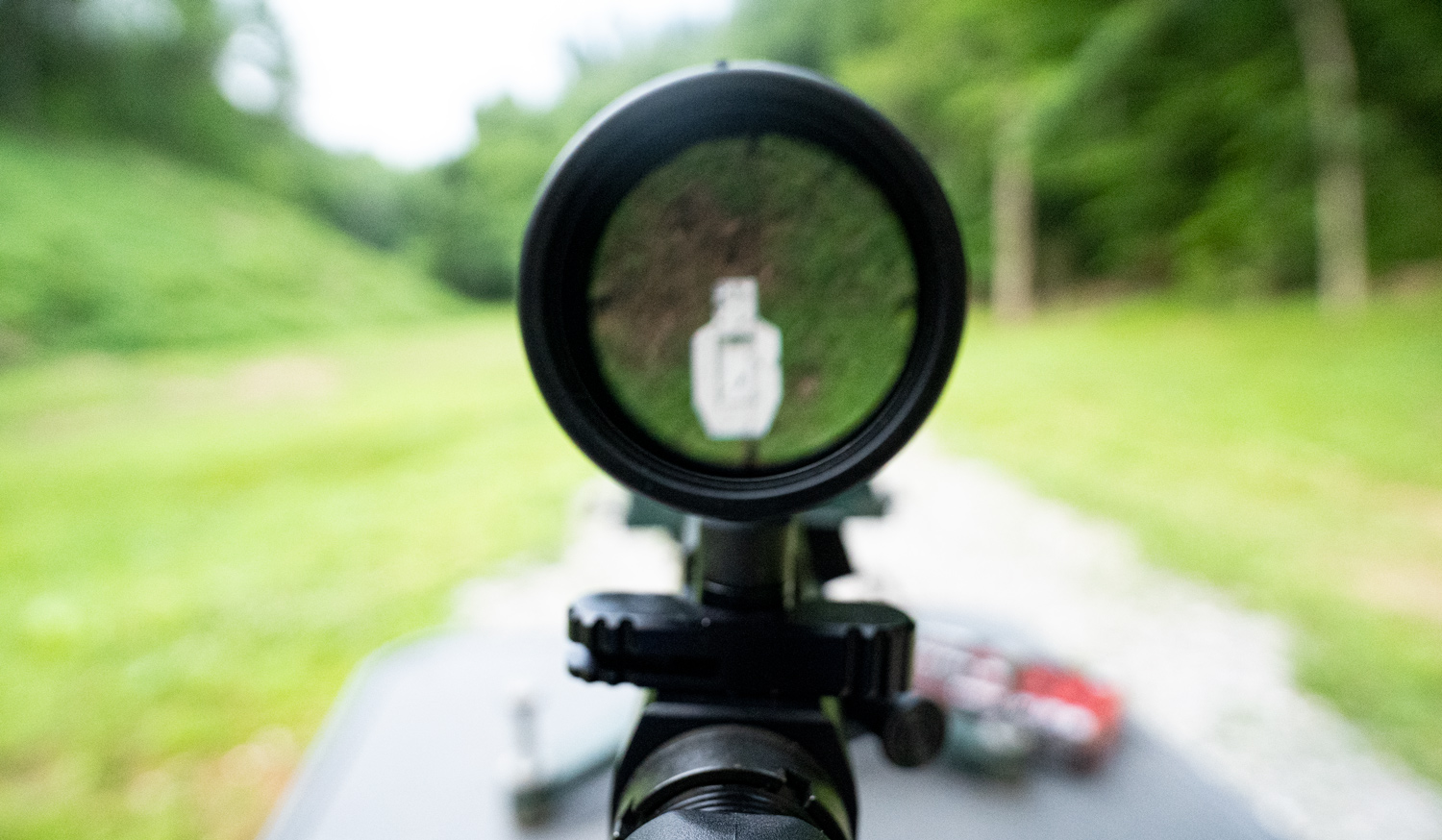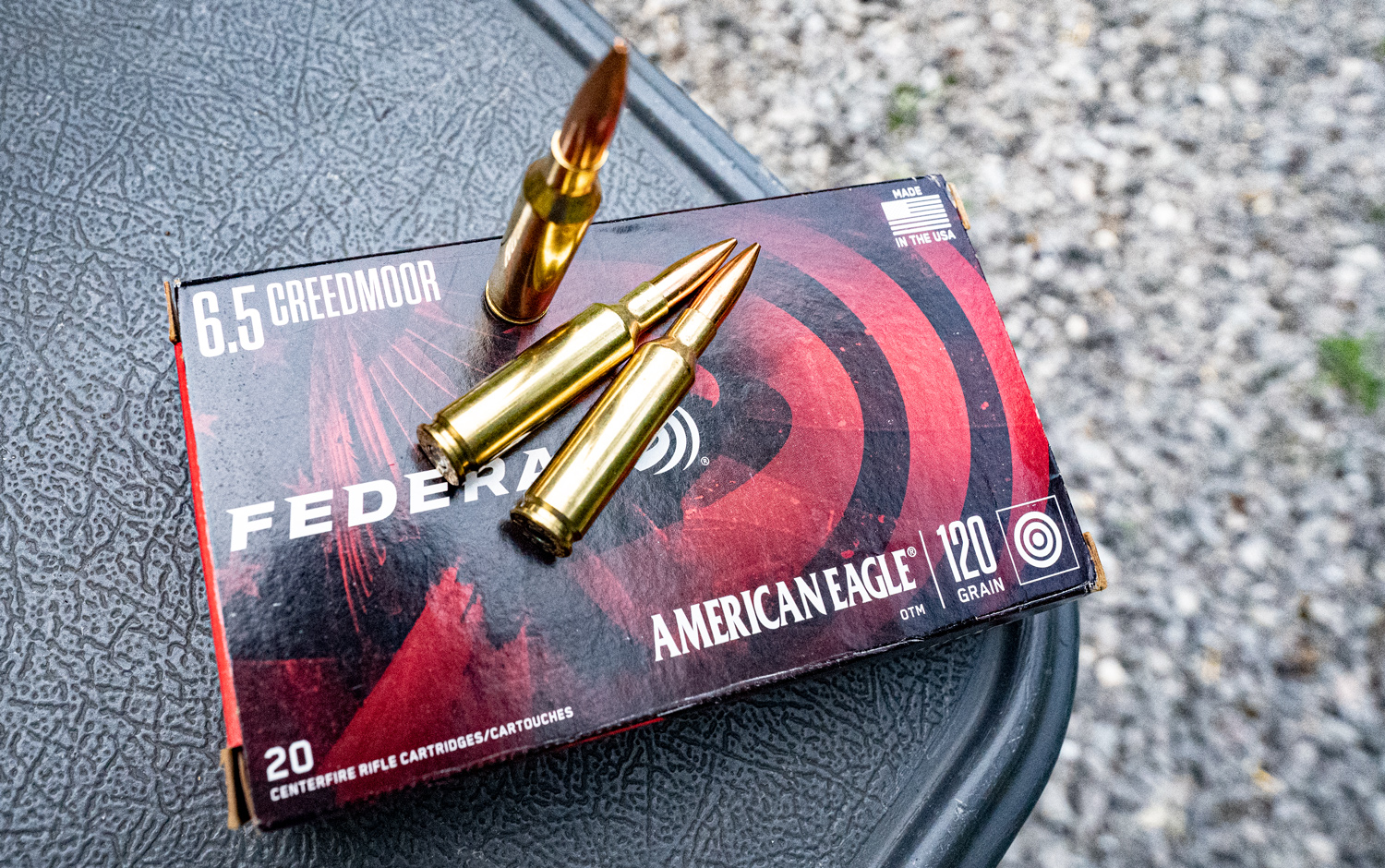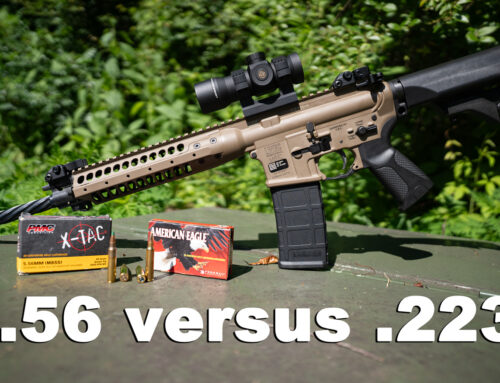The 6.5 Creedmoor cartridge was conceived and designed specifically for long-distance shooting. It has also become popular for hunting since its introduction in 2007. That’s thanks in no small part to its excellent accuracy.
What is the effective range of the 6.5 Creedmoor? The round’s 140 grain match bullet generally doesn’t lose its supersonic velocity until around the 1,150 yard mark. Within that range the tightness of a 6.5 CM rifle’s shot group pretty much depends on the quality of the rifle and its ammo – not to mention the skill of the person firing it.
What Do We Mean By “Effective Range?”

But a round’s effective range doesn’t necessarily mean how far away it will accurately place its bullet. According to the US Department of Defense (whom we accept as an authority on such matters), effective range is the “the maximum distance at which a weapon may be expected to be accurate and achieve the desired effect.” (Emphasis added.)
As far as our Armed Forces are concerned, “the desired effect” is a wound that effectively disables an adult’s body – not to kill them, necessarily, but at least to negate the threat they pose to our troops. The Army has established that impact energy as little as 60 ft lbs is sufficient to disable an enemy.
6.5 Creedmoor ammo is incapable of inflicting so little energy – assuming that the shooter aimed, that is. A 140 grain bullet might theoretically strike with 60 ft lbs of force if it’s falling straight out of the air.
The Army’s threshold for terminal impact energy is significantly lower than what is commonly recommended for civilians, anyway. The minimum energy recommended for self-defense typically falls between 220 and 300 ft lbs. Let us pick the average of those two numbers. That is 260 ft lbs, as our reasonable minimum for personal protection.
Maximum Effective Range of 6.5 Creedmoor for Hunting

Of course, you’re probably more interested in using your 6.5 CM rifle for hunting than you are for self-defense. To that end, 1,000 ft lbs of energy is often recommended as the minimum for ethical whitetail hunting. You certainly could take a deer with less energy with that. However, let’s look at the key word of “ethical” – you want to minimize the chance of your quarry spending its final moments in agonizing pain.
So: At what range does the 6.5 CM inflict 1,000 ft lbs of energy? And what about 260 ft lbs? To figure that out we calculated the ballistic performance of eight commercial hunting and target shooting cartridges, and then pinpointed the farthest ranges at which they would deliver the minimum energy recommended for deer hunting and self-defense.
| Muzzle Velocity (fps) | G1 Ballistic Coefficient | 1,000 ft lbs Range (yds) | 260 ft lbs Range (yds) | |
|---|---|---|---|---|
| Hornady 95gr V-MAX | 3300 | 0.372 | 458 | 1117 |
| Federal 120gr OTM | 2900 | 0.427 | 486 | 1321 |
| Hornady 120gr GMX | 3050 | 0.459 | 593 | 1491 |
| Remington 140gr PSP | 2700 | 0.417 | 466 | 1382 |
| Sellier & Bellot 140gr FMJBT | 2658 | 0.49 | 525 | 1603 |
| Hornady 140gr BTHP | 2690 | 0.589 | 652 | 1952 |
| Remington 140gr OTM | 2700 | 0.596 | 666 | 1981 |
| Hornady 143gr ELD-X | 2700 | 0.637 | 729 | 2164 |
(Not all of these bullets are hunting bullets – don’t shoot a deer with a V-MAX, BTHP, FMJBT or OTM.)
You can draw two key conclusions from our data:
1. If you ever were to fire a 6.5 Creedmoor rifle in self-defense, then its effectiveness would only be limited by your accuracy.
2. A 6.5 CDMR’s effectiveness for deer hunting varies widely cartridge to cartridge. Both the 120 grain GMX and 143 grain ELD-X would make suitable choices for whitetail, though the heavier and more ballistically efficient ELD-X’s effective range is over 200 yards longer.
In conclusion, you may fairly assume that any 6.5 CM cartridge’s effective range for deer hunting is at least 500 yards. How much farther beyond that you might wish to reach depends a great deal on your ammo and your confidence in your aim.






I shoot choice ammunition hand loaded 6.5 130 grain vld hunting bullet on white very little tra king a devastating round!
What barrel length and twist rate was best for 140+ grain bullets?
Most guys will point you toward a 1:8 for 140 grain or so bullets Bob. This might be a good topic for us to dive into deeper at some point though!